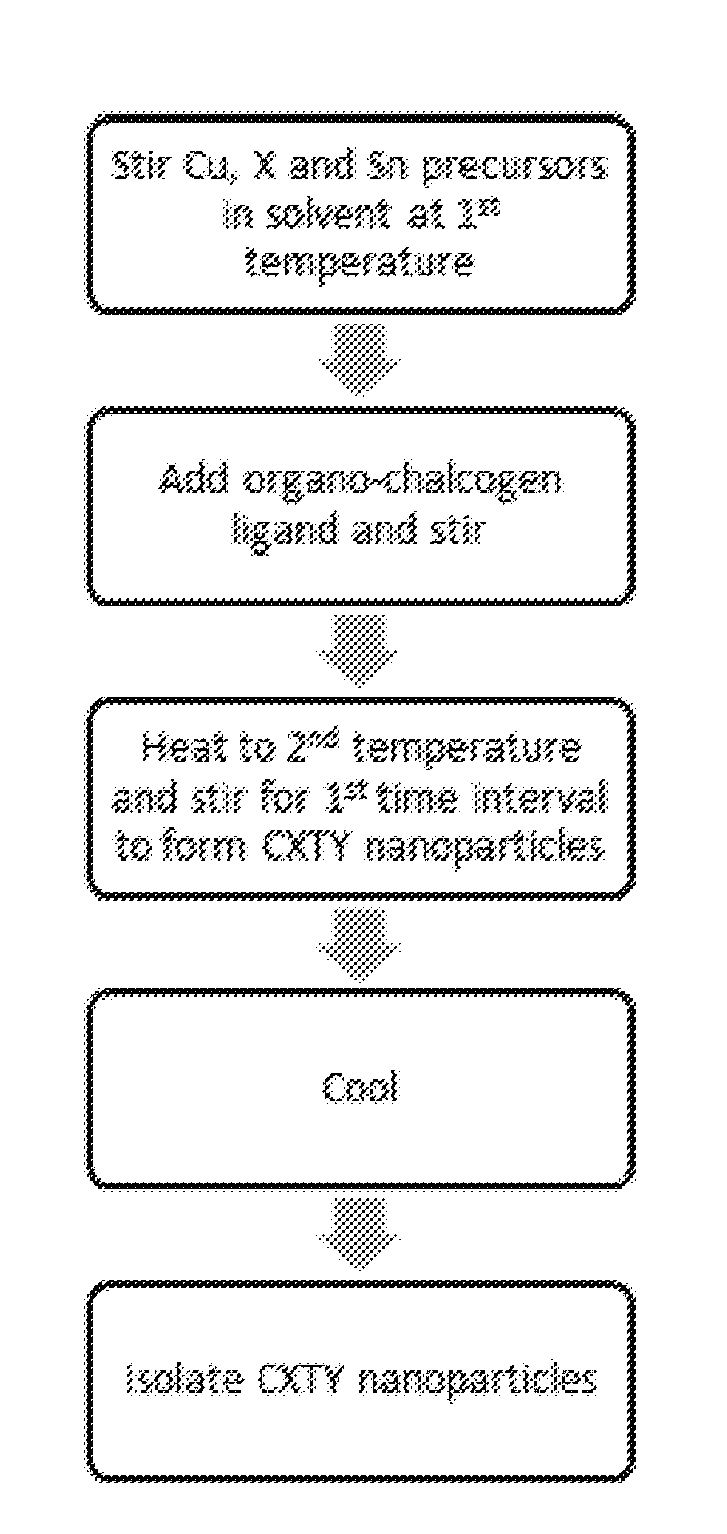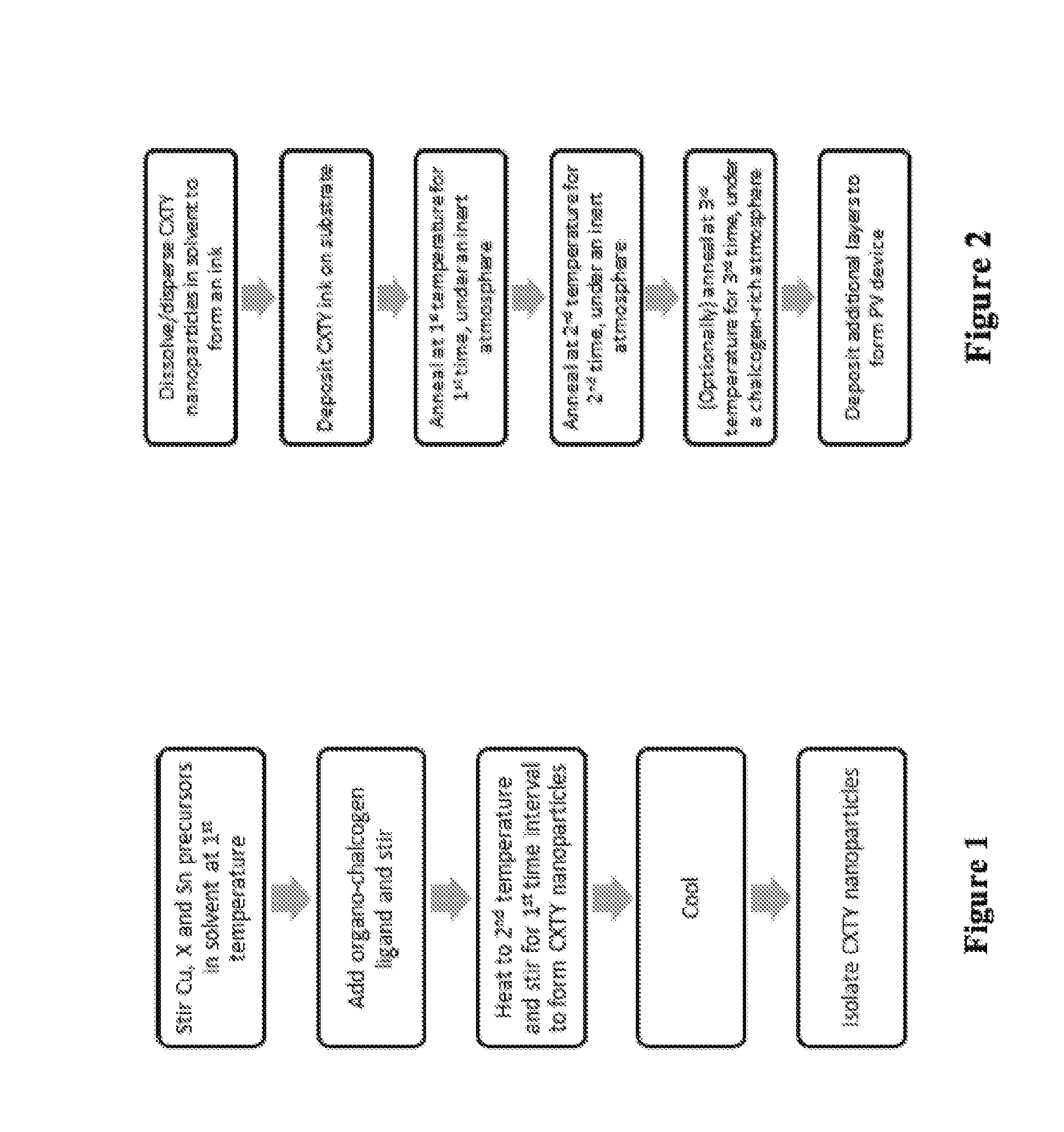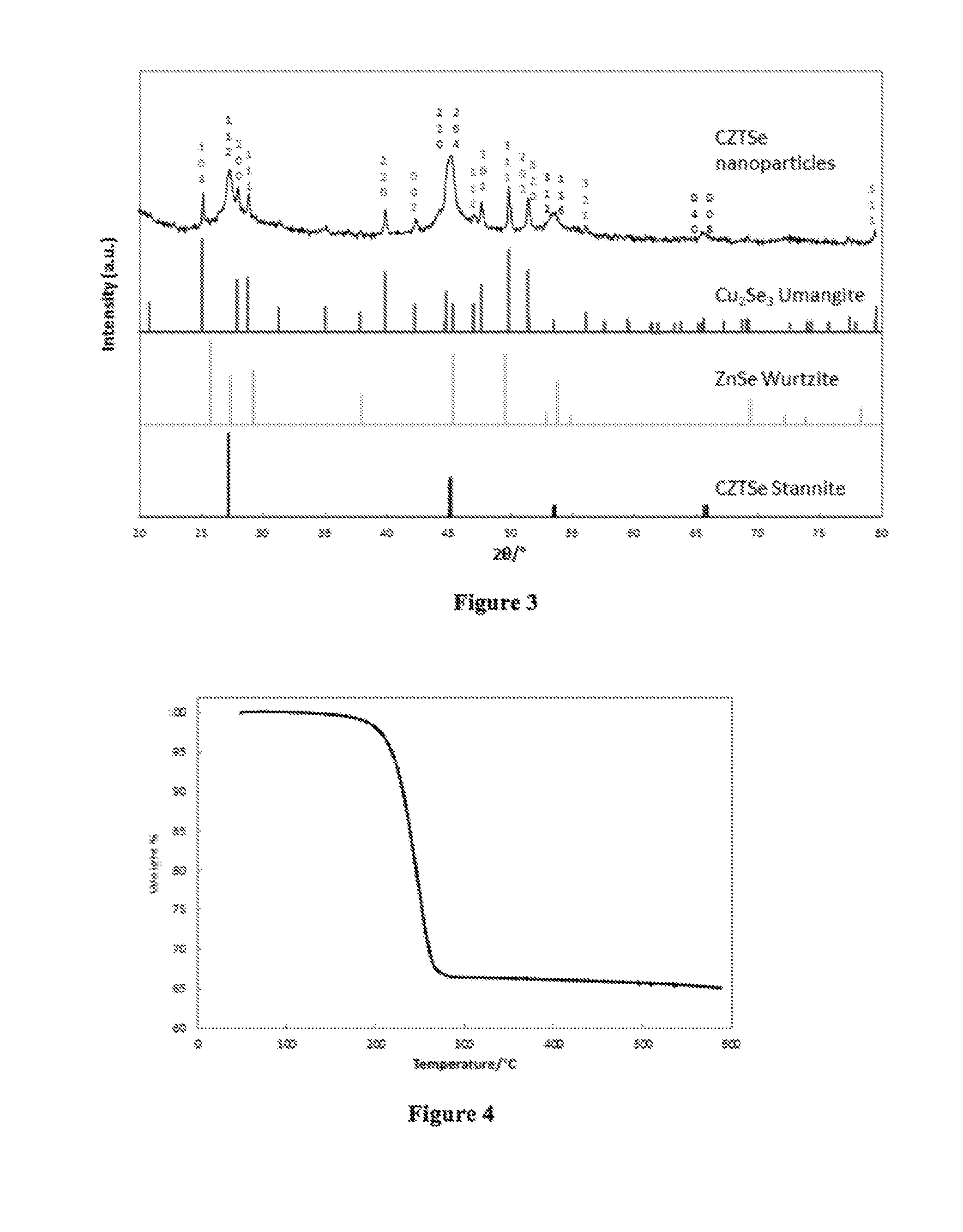Cu2XSnY4 Nanoparticles
a technology of nanoparticles and nanoparticles, applied in the field of cu2xsny4 nanoparticles, can solve the problems of high manufacturing cost, high material consumption and energy consumption, and high manufacturing cost, and achieve the effect of high yield
- Summary
- Abstract
- Description
- Claims
- Application Information
AI Technical Summary
Benefits of technology
Problems solved by technology
Method used
Image
Examples
example 1
Synthesis of CZTSe Nanoparticles
Example 1.1
[0049]Synthesis of CZTSe nanoparticles using 1-octane selenol as the selenium precursor. 1.0 g of Cu(ac) (8.2 mmol; ac=acetate), 0.74 g of Zn(ac)2 (4.0 mmol), and 4.1 mL of a 1 M solution of SnCl4 in dichloromethane (4.1 mmol) were stirred at room temperature in a 50 mL three-necked round-bottomed flask fitted with a magnetic stirrer and a condenser with a side-arm. 5 mL of dichloromethane were added to dissolve / suspend the salts, forming a grey solution. The mixture was degassed by bubbling through nitrogen at room temperature. After stirring under nitrogen for 1% hours the solution had turned a beige / cream colour. 11.6 mL of 1-octane selenol (65.0 mmol) were injected quickly into the flask; the mixture turned instantly dark red. The temperature was raised to 50-55° C. and held for 5 minutes to allow the dichloromethane, which collected in the side-arm of the condenser, to distil off. The mixture turned a bright golden orange colour. The t...
example 1.2
[0053]Synthesis of CZTSe nanoparticles using 1-dodecane selenol as the selenium precursor. 1.00 g of Cu(ac) (8.2 mmol) and 0.74 g of Zn(ac)2 (4.0 mmol) were purged with nitrogen in a 50 mL three-necked round-bottomed flask fitted with a magnetic stirrer and a condenser with a side-arm. 5 mL of dichloromethane and 4.1 mL of a 1 M solution of SnCl4 in dichloromethane (4.1 mmol) were stirred at room temperature, under nitrogen, for 90 minutes to form a beige suspension. 15 mL of 1-dodecane selenol were injected quickly into the flask. The temperature was raised to 50-60° C. to allow the dichloromethane, which collected in the side-arm of the condenser, to distil off. The temperature was raised to 240° C. and held for 1 hour, before cooling to room temperature. The product, a black powder (2.49 g), was isolated with chloroform / acetone and dichloromethane / methanol, and collected by centrifugation. The particles were dispersible in non-polar solvents.
[0054]Elemental analysis of the inorga...
example 2
Synthesis of CFTS Nanoparticles
Example 2.1
[0056]Synthesis of CFTS nanoparticles using Fe(acac)3 (acac=acetylacetonate) as the iron precursor. 1.0 g of Cu(ac) (8.2 mmol), 1.48 g of Fe(acac)3 (4.2 mmol), and 4.1 mL of a 1 M solution of SnCl4 in dichloromethane (4.1 mmol) were stirred at room temperature in a 50 mL three-necked round-bottomed flask fitted with a magnetic stirrer and a condenser with a side-arm. 5 mL of dichloromethane were added to dissolve / suspend the salts, forming a dark red mixture. The mixture was degassed by bubbling through nitrogen at room temperature for 1% hours. 15.5 mL of 1-dodecanethiol (64.7 mmol) were injected quickly into the flask; the mixture turned instantly brown. The temperature was raised to 60° C. and the dichloromethane, which collected in the side-arm of the condenser, was distilled off. The temperature was raised to 220-240° C., then held and stirred for 1 hour, before cooling to room temperature. The product, a black powder (1.57 g), was isol...
PUM
| Property | Measurement | Unit |
|---|---|---|
| band gaps | aaaaa | aaaaa |
| band gap | aaaaa | aaaaa |
| band gap | aaaaa | aaaaa |
Abstract
Description
Claims
Application Information
 Login to View More
Login to View More - R&D
- Intellectual Property
- Life Sciences
- Materials
- Tech Scout
- Unparalleled Data Quality
- Higher Quality Content
- 60% Fewer Hallucinations
Browse by: Latest US Patents, China's latest patents, Technical Efficacy Thesaurus, Application Domain, Technology Topic, Popular Technical Reports.
© 2025 PatSnap. All rights reserved.Legal|Privacy policy|Modern Slavery Act Transparency Statement|Sitemap|About US| Contact US: help@patsnap.com



